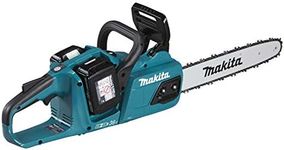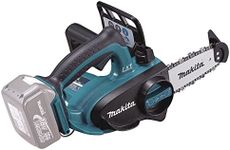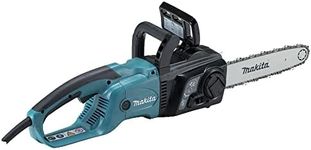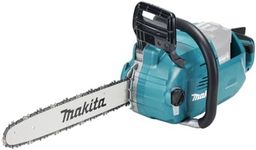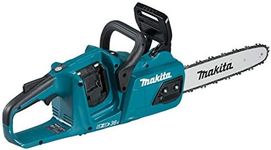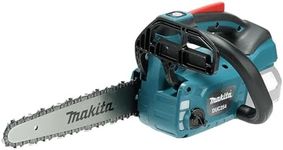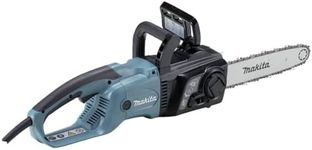Buying Guide for the Best Makita Chainsaws
When choosing a chainsaw, it's important to consider the type of work you'll be doing, your level of experience, and the environment in which you'll be using the tool. Chainsaws come in various sizes and power levels, and selecting the right one can make your tasks easier and safer. Understanding the key specifications will help you make an informed decision that aligns with your needs and ensures efficient performance.Engine PowerEngine power in chainsaws is measured in cubic centimeters (cc) or horsepower (HP) and determines the saw's ability to cut through wood. Higher power is suitable for heavy-duty tasks like felling large trees, while lower power is sufficient for lighter tasks such as pruning or cutting small logs. If you're a homeowner needing a chainsaw for occasional use, a model with lower engine power will be adequate. For professional use or frequent heavy-duty tasks, opt for a higher-powered engine.
Bar LengthThe bar length of a chainsaw refers to the length of the cutting blade and is measured in inches. It determines the size of the wood you can cut in a single pass. Shorter bars (12-16 inches) are ideal for light tasks like trimming and pruning, while medium bars (16-20 inches) are versatile for general use. Longer bars (20 inches and above) are best for cutting large trees and heavy-duty work. Choose a bar length based on the size of the wood you'll be cutting most often.
WeightThe weight of a chainsaw affects its maneuverability and ease of use. Lighter chainsaws are easier to handle and are suitable for tasks that require precision and control, such as pruning. Heavier chainsaws, while more powerful, can be tiring to use for extended periods and are better suited for experienced users handling large-scale cutting tasks. Consider your physical strength and the duration of use when selecting the weight of your chainsaw.
Fuel TypeChainsaws can be powered by gas, electricity, or batteries. Gas-powered chainsaws are powerful and suitable for heavy-duty tasks but require more maintenance and produce emissions. Electric chainsaws are quieter, require less maintenance, and are ideal for light to medium tasks near a power source. Battery-powered chainsaws offer portability and are good for light to medium tasks but have limited run time. Choose the fuel type based on the nature of your tasks and your preference for maintenance and environmental impact.
Safety FeaturesSafety features in chainsaws, such as chain brakes, anti-vibration systems, and safety switches, are crucial for preventing accidents and ensuring user safety. Chain brakes stop the chain quickly in case of kickback, while anti-vibration systems reduce fatigue during prolonged use. Safety switches prevent accidental starts. Prioritize chainsaws with comprehensive safety features, especially if you're a beginner or will be using the chainsaw frequently.


